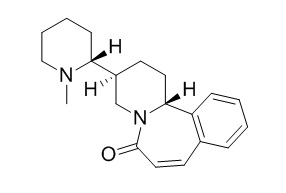Astrocasine
Astrocasine is a natural product from Carduus acanthoides L.
Inquire / Order:
manager@chemfaces.com
Technical Inquiries:
service@chemfaces.com
Tel:
+86-27-84237783
Fax:
+86-27-84254680
Address:
1 Building, No. 83, CheCheng Rd., Wuhan Economic and Technological Development Zone, Wuhan, Hubei 430056, PRC
Providing storage is as stated on the product vial and the vial is kept tightly sealed, the product can be stored for up to
24 months(2-8C).
Wherever possible, you should prepare and use solutions on the same day. However, if you need to make up stock solutions in advance, we recommend that you store the solution as aliquots in tightly sealed vials at -20C. Generally, these will be useable for up to two weeks. Before use, and prior to opening the vial we recommend that you allow your product to equilibrate to room temperature for at least 1 hour.
Need more advice on solubility, usage and handling? Please email to: service@chemfaces.com
The packaging of the product may have turned upside down during transportation, resulting in the natural compounds adhering to the neck or cap of the vial. take the vial out of its packaging and gently shake to let the compounds fall to the bottom of the vial. for liquid products, centrifuge at 200-500 RPM to gather the liquid at the bottom of the vial. try to avoid loss or contamination during handling.
J. Pharm. Biomed. Anal.2024, 245:116193.
Cancer Sci.2022, 113(4):1406-1416.
Environ Toxicol.2024, 39(3):1556-1566.
Pharmaceuticals (Basel).2024, 17(4):442.
Planta Med.2018, 84(15):1101-1109
Acta Pharm Sin B.2015, 5(4):323-9.
Foods.2023, 12(6):1227.
Biochem Biophys Res Commun.2019, 518(4):732-738
Pharmacol Res.2022, 182:106346.
Postharvest Biol Tec2019, 149:18-26
Related and Featured Products
The Alkaloids: Chemistry and Physiology,1968,10: 545-95.
Chapter 13 Alkaloids Unclassified and of Unknown Structure[Reference:
WebLink]
This chapter discusses several plants, such as (1) Alangium lamurckii Thw., (2) Astrocasia phyllanthoides, and (3) Carduus acanthoides L., and their contained alkaloids.
METHODS AND RESULTS:
A reexamination of Alangium lamurckii Thw., has yielded tubulosine, cephaeline, and a base which seems to be protoemetinol. It was tentatively identified by its mass spectrum. Astrocasia phyllanthoides has yielded Astrocasine, C20H26ON2; monoperchlorate, and monomethiodide that have one N-methyl and a lactam carbonyl. Spectral data of it indicate a nearly planar cis-cinnamoyl N-dialkylated lactam. Catalytic reduction generates dihydroAstrocasine, C20H26ON2, and lithium aluminum hydride reduction generates oily desoxyAstrocasine that forms a dihydrochloride and a diperchlorate. Carduus acanthoides L., has mild hypotensine activity and this has been traced to one of the alkaloid constituents, acanthoidine, C16H26O2N4, B.2HCl. A second base, also isolated as its dihydrochloride was named acanthoine, C16H22O2N4, and on catalytic reduction generates acanthoidine.



